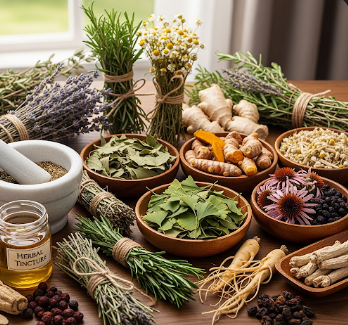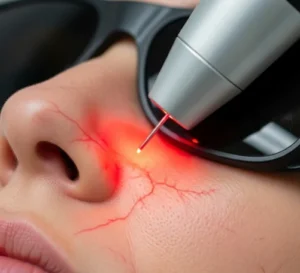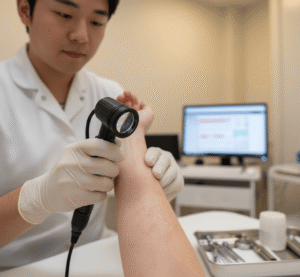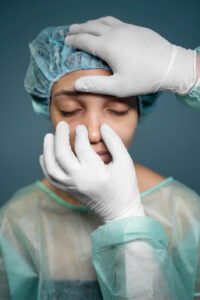What it is
Herbal medicines are therapeutic preparations made from plants, plant parts, or plant extracts, traditionally used to treat or prevent various illnesses. They are a core component of traditional medicine systems, including Korean traditional medicine (Hanbang), Traditional Chinese Medicine (TCM), and Ayurveda. Herbal medicines can come in multiple forms: teas, powders, capsules, tablets, tinctures, and topical applications. In Korea, they are often combined with acupuncture, moxibustion, or cupping as part of integrative medical therapy.
Key points:
- Made from natural plant-based ingredients.
- May include leaves, roots, seeds, bark, flowers, or entire plants.
- Can be used alone or combined with other herbs for synergistic effects.
- Widely recognized for supporting overall health, treating chronic conditions, and enhancing wellness.
Why it’s done
Herbal medicines are used for both preventive and therapeutic purposes. Their applications vary depending on the condition, dosage, and type of herb.
Primary reasons include:
- Treatment of chronic diseases: Conditions like digestive disorders, insomnia, hypertension, and mild depression.
- Immune system support: Many herbal preparations aim to strengthen immunity and improve general vitality.
- Symptom relief: Pain management, inflammation reduction, and alleviation of respiratory or gastrointestinal discomfort.
- Detoxification and wellness: Some herbs are believed to cleanse the body and maintain balance.
- Adjunct therapy: Used alongside conventional treatments to enhance outcomes or reduce side effects.
In Korea, herbal medicine is often prescribed based on a holistic diagnosis, which may include pulse analysis, tongue examination, and other traditional diagnostic techniques.
Alternatives
While herbal medicines are effective for many patients, there are several alternative approaches:
- Conventional pharmaceuticals: Modern drugs prescribed for specific conditions like painkillers, antibiotics, or antihypertensives.
- Dietary and lifestyle interventions: Nutrition-based approaches, physical exercise, meditation, or stress management.
- Nutraceuticals and supplements: Vitamins, minerals, and plant-based supplements with standardized doses.
- Acupuncture or other traditional therapies: May be used independently or combined with herbal medicine for better results.
- Homeopathy or alternative systems: Other traditional medicine systems may offer different plant-based or holistic therapies.
Note: The choice between herbal medicine and alternatives depends on condition severity, patient preference, and medical guidance.
Preparation
Proper preparation is essential to ensure efficacy and safety of herbal treatments.
Steps patients should follow include:
- Consultation with a licensed practitioner: Especially a traditional medicine doctor, to determine the correct herbs and dosage.
- Disclosure of medical history: Include any chronic conditions, medications, or allergies.
- Avoiding contraindicated foods or substances: Some herbs interact with alcohol, caffeine, or specific medications.
- Following preparation instructions: Depending on the form—boiling, soaking, or consuming directly as capsules.
- Monitoring symptoms: Keep track of any positive effects or side effects to adjust treatment if needed.
Tip: Korean herbal medicine often involves a personalized formula, so skipping professional guidance can reduce effectiveness or cause adverse effects.
How it’s done
The administration of herbal medicines varies depending on the form and purpose:
1. Decoctions (Boiled Herbs):
- Raw herbs are combined according to the practitioner’s prescription.
- Boiled in water for a specified time to extract active compounds.
- Consumed as a warm liquid, usually 1–3 times daily.
2. Powders and Granules:
- Herbs are dried and ground into fine powders.
- Can be mixed with water or taken in capsules.
- Convenient for patients who need standardized doses.
3. Pills and Capsules:
- Compressed herbal extracts for ease of consumption.
- Useful for long-term therapy or preventive purposes.
4. Topical Applications:
- Herbal creams, ointments, or plasters applied directly to affected areas.
- Often used for musculoskeletal pain, skin conditions, or inflammation.
5. Combined Therapies:
- Herbal medicine in Korea is frequently combined with acupuncture, moxibustion, or cupping, aiming to balance Qi (energy flow) and restore overall body harmony.
Note: Dosage, timing, and combination of herbs are determined by the practitioner based on individual constitution (Sasang type), condition severity, and overall health goals.
Recovery
The effects of herbal medicine can vary depending on the condition and treatment duration:
- Acute conditions: Some symptoms may improve within days to weeks, such as mild digestive disturbances or fatigue.
- Chronic conditions: Long-term therapy (weeks to months) may be required for hypertension, diabetes, or chronic pain.
- Preventive therapy: Focused on maintaining health balance and vitality, noticeable changes may be subtle but steady.
Typical patient guidance:
- Follow the prescribed dosage and schedule strictly.
- Maintain a balanced diet and healthy lifestyle to enhance therapeutic effects.
- Monitor for gradual symptom relief; herbal therapy rarely produces immediate results like modern pharmaceuticals.
Complications
While generally considered safe, herbal medicines can have risks if misused:
- Allergic reactions: Rash, itching, or swelling in sensitive individuals.
- Drug interactions: Can interfere with prescription medications (e.g., anticoagulants, antidepressants).
- Toxicity: Overdose of certain herbs may affect the liver, kidneys, or heart.
- Contamination risks: Poor-quality or adulterated herbs may contain heavy metals, pesticides, or harmful additives.
- Misdiagnosis or delayed treatment: Relying solely on herbal therapy for serious illnesses may postpone critical conventional care.
Prevention of complications:
- Use only licensed, high-quality herbal preparations.
- Consult a trained herbal medicine practitioner.
- Inform the practitioner of all current medications.
- Monitor body response and report unusual symptoms promptly.
Treatment Options in Korea
In Korea, herbal medicine is a well-established and regulated medical practice.
Key features:
- Available in traditional medicine clinics (Hanbang clinics) and hospitals with integrative departments.
- Prescriptions are personalized after a holistic diagnosis.
- Often combined with acupuncture, moxibustion, or dietary therapy.
- Widely used for chronic illnesses, preventive care, and wellness.
- Regulated by the Korean Ministry of Health and Welfare, ensuring standards for safety and quality.
Patients seeking herbal medicine in Korea typically undergo:
- Initial consultation and diagnosis by a licensed Korean medicine doctor.
- Customized herbal formula preparation based on individual needs.
- Continuous monitoring and adjustment of the treatment plan.
Summary: Herbal medicines in Korea offer a safe, effective, and culturally respected approach to health when guided by professionals. They are used both as standalone treatments and as complementary therapies alongside conventional medicine. With proper preparation, supervision, and adherence, patients can experience improved symptoms, enhanced immunity, and overall wellness.













